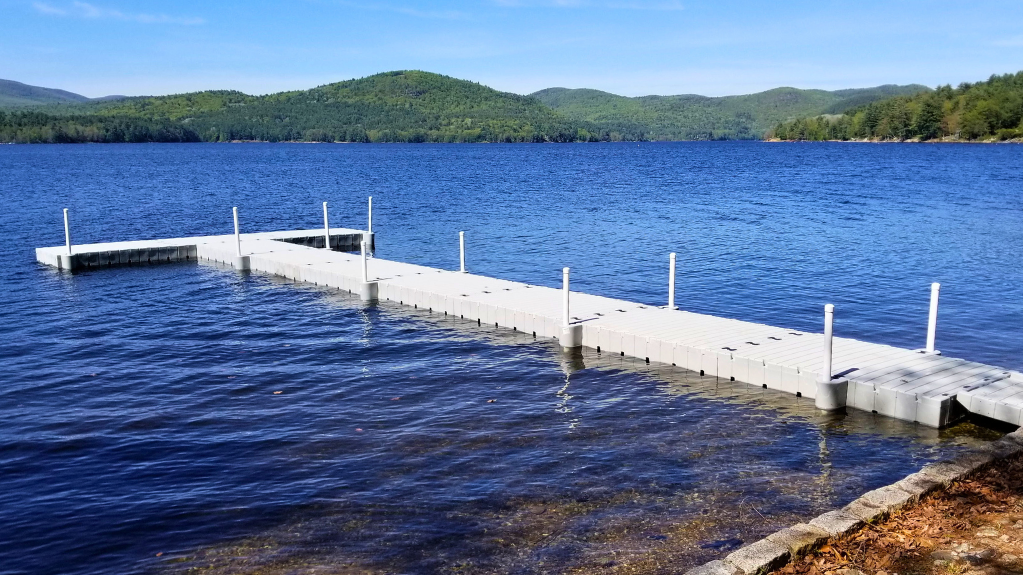Optimizing Your Outdoor Room with Specialized Floating Dock Providers
Upgrade Your Beachfront With Sturdy Floating Docks
Updating your waterfront with resilient floating docks can significantly enhance both performance and visual appeals, supplying a functional solution for various water activities. With a variety of products readily available, including low-maintenance options and standard timber, picking the appropriate dock can complement your personal style and satisfy functional requirements.
Advantages of Floating Docks
Floating docks offer a plethora of benefits that boost their charm for numerous maritime applications. Unlike traditional set docks, floating docks surge and fall with the tide, making certain consistent ease of access for boats and boat regardless of ecological problems.
Furthermore, floating docks are simpler to relocate and mount, supplying flexibility for seasonal or short-lived use. Their modular style permits personalization to fit specific requirements, whether for private marinas, property waterfronts, or industrial applications.
Additionally, floating docks produce marginal disturbance to the aquatic atmosphere, maintaining local environments and reducing the possibility of disintegration. They additionally provide improved safety and security and security for users, as their buoyant nature uses an extra flexible surface than rigid structures.
Moreover, floating docks can promote a diverse variety of activities, such as fishing, swimming, and entertainment boating, making them a beneficial property for beachfront growth. Their convenience and practicality make floating docks a preferred choice for a variety of maritime projects.
Choosing the Right Materials
Selecting suitable materials for floating docks is vital to their longevity, performance, and overall effectiveness. When choosing materials, consider factors such as environmental exposure, upkeep needs, and architectural honesty. Usual products consist of wood, plastic, aluminum, and composite choices, each offering unique advantages and negative aspects.
Timber, while cosmetically pleasing, requires regular maintenance to prevent rot and decay. Pressure-treated timber can boost durability, yet it might still yield to water damage in time. Plastic floats, typically made from high-density polyethylene, are resistant to corrosion and require marginal maintenance, making them an eye-catching selection for low-maintenance applications.
Aluminum is another viable alternative, recognized for its toughness and light-weight residential or commercial properties. It is resistant to corrosion and can hold up against extreme climate condition, although it might be a lot more expensive than various other materials. Compound products combine the ideal features of wood and plastic, offering a resistant and low-maintenance choice that simulates the appearance of timber without the connected downsides.
Ultimately, the choice of material should straighten with the meant usage, environmental factors to consider, and budget restraints, guaranteeing a sturdy and functional floating dock that meets your particular demands.
Installation Refine Overview
The successful installment of a floating dock depends on mindful planning and execution, making sure that it runs efficiently in its desired environment. The initial step entails evaluating website problems, consisting of water depth, shoreline functions, and dominating climate patterns, which will notify the dock style and anchoring system.
Adhering to the site assessment, the next phase is to prepare the floating dock parts. This consists of putting together the framework, safeguarding drifts, and attaching any needed equipment. It is essential to make sure that all links are waterproof and durable to withstand marine conditions.
When the dock is set up, the installment procedure starts with placing the dock in the water. This can entail a crane or various other training tools, specifically for larger structures. Proper alignment is important for functionality and safety.

Maintenance Tips for Long Life
Routine upkeep is necessary for guaranteeing the long life and optimal efficiency of a floating dock. To attain this, begin with regular evaluations at least twice a year, concentrating on the stability of the dock's framework, including the flotation additional reading protection devices and linking equipment. Try to find signs of damages, rust, or wear, and resolve any concerns promptly to stop additional damage.
Cleaning is an additional crucial facet of maintenance. Get rid of debris, algae, and barnacles from the dock's surface to prevent slippery problems and maintain aesthetic allure. Make use of a moderate cleaning agent and a soft brush to stay clear of damaging the dock's products.
Additionally, guarantee that the dock is effectively anchored and protected to hold up against seasonal changes in water degrees and weather. Check the anchoring system for security and make changes as essential.
Enhancing Your Outdoor Visual
To create an aesthetically attractive outside room, incorporating a floating dock can significantly enhance the total visual of your waterfront building. Floating docks are not just practical however can likewise function as a striking focal point that matches the natural environments - dock company. Readily available in numerous products and styles, these docks can be customized to match your residential property's building style and landscape
The enhancement of ornamental elements, such as integrated illumination or trendy barriers, further raises the dock's visual appeal. Think about using natural timber surfaces, which blend seamlessly with the setting, or going with modern products like aluminum or composite decking that supply a streamlined, modern look.
Strategically positioning planters or seating areas on or around the dock can create inviting areas that encourage leisure and satisfaction of waterside views. Furthermore, integrating shades and appearances that integrate with your landscape will create a natural visual throughout your outdoor area.

Conclusion

Updating your beachfront with sturdy floating docks can dramatically enhance both performance and looks, providing a flexible solution for different water tasks. Unlike typical set docks, floating docks rise and fall with the tide, making certain constant accessibility for boats and watercraft regardless of environmental problems.Selecting suitable materials for floating docks is vital to their long life, efficiency, and general efficiency.Once the dock is assembled, the installation process begins with positioning the dock in the water.In recap, floating docks offer additional resources countless advantages, including adaptability to water degree adjustments and a range of product options.